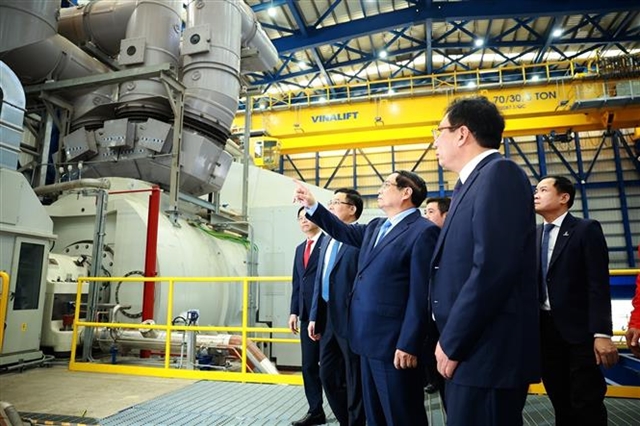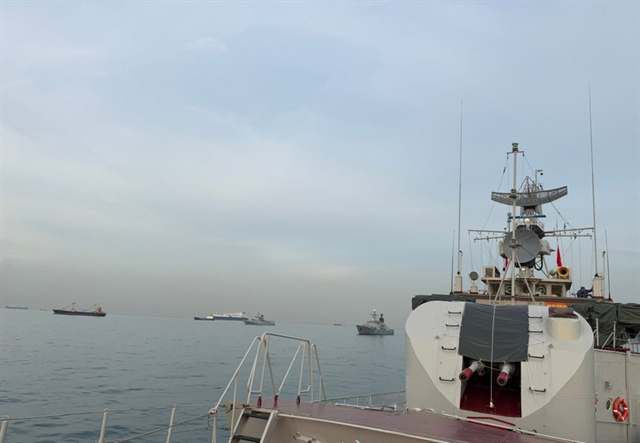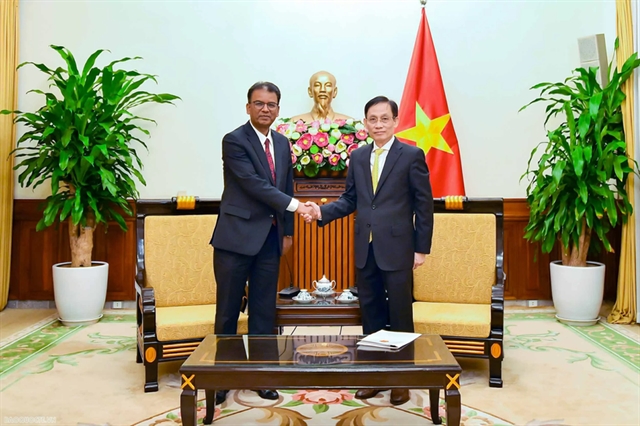 Features
Features
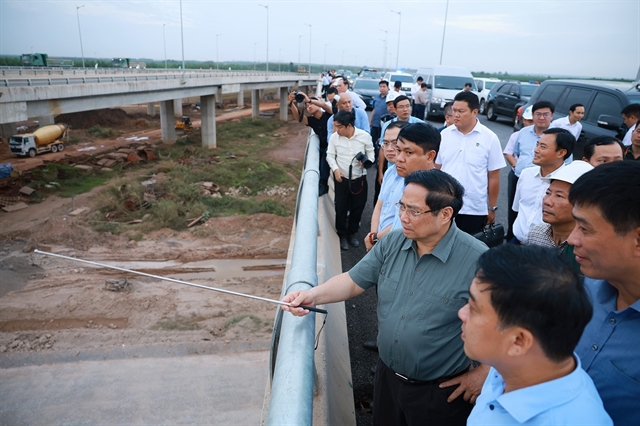
The bombing over Tân Sơn Nhất Airport, the airbase of the Republic of South Việt Nam, by Quyết Thắng Squadron on April 28, 1975, was a glorious victory of the Việt Nam People’s Air Force and helped accelerate the collapse of the American supported Sài Gòn regime just two days after. Việt Nam News reveals the stories of the silent heroes behind the success of the squadron.
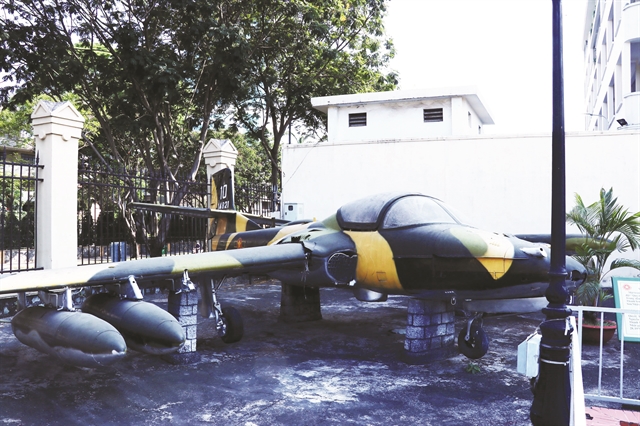
|
| One of five A-37 aircraft of Quyết Thắng Squadron, led by pilot Nguyễn Thành Trung, which bombed Tân Sơn Nhất Airport on April 28, 1975, is now on display at the Hồ Chí Minh Campaign Museum. (Military Zone 7 Museum). VNA/VNS Photo Tiến Lực |
by Tiến Lực and Xuân Khu
The bombing over Tân Sơn Nhất Airport, the airbase of the Sài Gòn administration, by Quyết Thắng Squadron on April 28, 1975, was a glorious victory of the Việt Nam People’s Air Force and helped accelerate the collapse of the American supported Sài Gòn regime just two days after. Việt Nam News reveals the stories of the silent heroes behind the success of the squadron.
Lieutenant Phạm Chu Hải, a technician who served in the heroic Quyết Thắng Squadron, still vividly remembers the first days of April 1975.
He and his air force engineer colleagues Vũ Đình Lầu, Lê Hải and Trần Thanh Tường were gathered to move immediately to the South for a special urgent mission.
They were assigned to study the use of the enemy’s planes, mainly the F5 and A-37, to make use of them when needed.
“The commander repeated to us, again and again, that it was an absolutely secret mission. On April 5, 1975, we returned from Sơn Trà to Đà Nẵng Airport in the central city of Đà Nẵng by a booty GMC vehicle. For the first time in my life, I saw with my own eyes in a very short distance an intact military helicopter UH-1 parked on the runway of Đà Nẵng Airport,” Hải said.
It took two days for Hải and his team to get from Đà Nẵng to Nha Trang City where they called at the Nha Trang air force training school under the Sài Gòn regime in Nha Trang Airport
Their main tasks were to search for technical documents they thought were stored at the school so they could study the operations of the planes the “puppet” army left behind after being defeated on the central front.
But the team found it was completely deserted and fiercely damaged by the enemy before they fled.
“During the next two days, we focused on the reconnaissance, inspection and search for documents in a high alert situation to be ready to fight if an attack occurred. Fortunately, we finally found some technical documents, including perfect drawings about the weapons planned to be installed on the F5 and A-37 aircraft,” Hai recalled.
Hải said the technical documents and the remaining aircraft at Nha Trang Airport helped the technical staff conduct both theoretical study and practising work, and after a short time, all of them had basically grasped the operation techniques.
“This was very important to our mission as it would make a great contribution to repairing, re-operating and bringing the fighting aircraft to the front afterwards,” according to the veteran.
Preparing
On April 19, 1975, the Army General Command and Hồ Chi Minh Campaign Military Command assigned the Air Defence Force to prepare for participating in the liberation campaign of Sài Gòn.
The command decided to select MiG-17 pilots to switch to A-37. The 371 Division recruited the elite MiG-17 pilots from Company 4 of the 923 Regiment who were all highly skilled and experienced in fighting such as Nguyễn Văn Lục, Từ Đễ, Hán Văn Quảng and Hoàng Mai Vượng.
In terms of aircraft, the air force command decided to use the A-37 planes seized from the enemy.
The task of ensuring the technical recovery, restoration and putting into use the A-37 aircraft was assigned to Major Hồ Thanh Minh, then Deputy Head of Technical Department of Division 371. Pilot Nguyễn Văn Thọ from 923 Regiment was tasked with training pilots for A-37 aircraft in just five days.
On April 20, pilots were sent to Đà Nẵng Airport for five days of training. Then military commander Lê Văn Tri introduced two pilots named Nguyễn Văn Xanh and Trần Văn On, surrendered enemy soldiers who had agreed to serve the Vietnamese army.
The two pilots were very skilled at flying the A-37. The two skilled pilots who could speak English fluently greatly aided preparations for the air fighting campaign, a report from the air force has revealed.
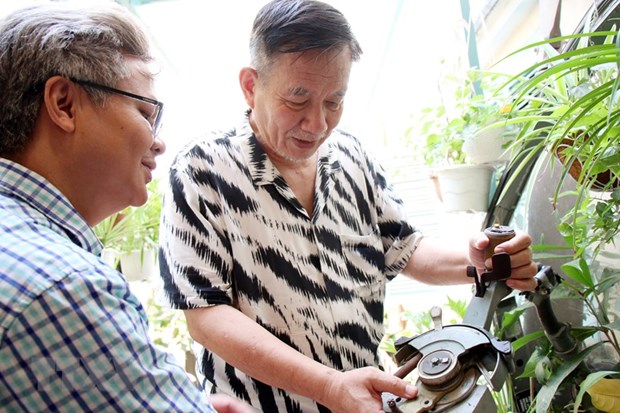
|
| Pilot hero Từ Đễ presents flying and bombing control equipment of the A-37 aircraft. VNA/VNS Photo Tiến Lực |
On April 24, after only two days of training, pilot Từ Đễ could take the first flight. The next day, pilots Nguyễn Văn Lục, Hoàng Mai Vượng, Hán Văn Quảng and Trần Cao Thăng successfully finished their first flights using the A-37. On April 26, the command sent pilot Nguyễn Thành Trung to Đà Nẵng for the Quyết Thắng Squadron and prepare for the mission.
Recalling that time, On said: “In the process of working with other pilots to switch to A-37 aircraft, I found they were all also experienced in flight, so there were not many difficulties in training them. One of the challenges was that they did not know English so I had to translate some technical terms to them while guiding them on how to use the crewing board. They were all training very well after a short time.”
Lục, the Quyết Thắng Squadron chief, said the five-day training course was a success as the pilots selected to carry out the Tân Sơn Nhất bombing mission had the most expertise and experience.

|
| GEAR: Part of the uniform of Lieutenant Phạm Chu Hải, a technician who served the heroic Quyết Thắng Squadron. Hải retired as a senior lieutenant colonel. VNA/VNS File Photo |
“They were the best of Squadron 4, or formerly the Company 4 under the 392 Regiment. This squadron was the only unit of the Vietnamese air force to be awarded the Hero honour three times,” according to Lục.
Operations
On April 26, 1975 People's Armed Forces Hero Nguyễn Hồng Nhị, who was at that time the deputy chief of Division 371 and Chief of the Division General Staff, flew from the North to the South to prepare for the attack on Tân Sơn Nhất Airport.
Nhị met with the technical team of Lieutenant Chu Hải to ask them about the research process and requested they meet at noon the day after at Thành Sơn Airport in Phan Rang airbase, to prepare bombs for five A-37 aircraft to be ready for the mission and set out for Phù Cát District in the southern Bình Định Province.
At about 5am on April 27, 1975, the four engineer officers of Hải’s team made their way to Thành Sơn Airport to take over a bomb store.
At that time, Hải said the airport was quite deserted. The bomb warehouse was located under a mountain and covered by trees.
They found all kinds of bombs but had to select and classify bombs synchronised with the equipment on each aircraft.
“At 8 o'clock on April 28, 1975, all the bombs were transferred near the runway and placed next to the aircraft. At that time, I found in the parking lot an A-37 already installed with bombs. I also found some MJ1 bomb forklifts, but I did not know how to use them, so I planned to install the bombs by hand as I thought technically it was not much different to what I had done many times before with the IL-28, MiG-17, and An-2 aircraft, " Hải said.
Thành Sơn Airport welcomed a Mi6 carrying a task force in charge of using the enemy’s aircraft to fight the enemy including Major Hồ Thanh Minh, the head of the task force, Lieutenant Nguyễn Văn Soạn, some air force commanders and a group of about 10 people from the Republic of South Vietnam's engineering team who had surrendered and were ready to serve the Vietnamese army.
Major Minh later became Major General and Director of Department of Science and Technology Management under the Ministry of Defence’s General Department of Technology.
Five A-37s of Quyết Thắng Squadron number 920, 921, 413, 415 and 955 landed at the airport at noon on the same day.
Hải and the technical team started to inspect technical information for the next flights, especially the weapons and bombs control system and after completing the inspections, Hải’s group and the other technical team installed four MK-81 bombs on each aircraft. Hải and one of his team members, Lieutenant Nguyễn Đình Thủy, who later became a colonel, directly checked the aircraft for the last time.
The pilots also checked the planes before setting off that afternoon.
“That was all before the historic afternoon of April 28, 1975, when the bombing over Tân Sơn Nhất Airport was done successfully. The attack later became a resounding victory giving a ‘direct punch’ to the enemy,” Hải proudly recalled.
“At that time, the technical force was so happy with the victory but did not neglect their major tasks. They immediately started to prepare for the next bombing,” according to the veteran.
“Welcoming back Quyết Thắng Squadron after the victory, we had to deal with the two unexploded bombs on Lục's plane and received more orders to prepare bombs for the second scheduled attack on the morning of April 29,” said Hải.
Fortunately, the veteran said when he and another team member were trying to transfer more bombs out of storage, they were informed that there would be no attack on April 29, because the infantry had approached their targets.
The story about the logistics team for Quyết Thắng Squadron was recorded emotionally and in detail in a recording tape named 'Tân Sơn Nhất Airport bombing'.
When the pilots took off and disappeared into the dark clouds, Hải and his technical team all anxiously awaited their return.
But when they heard a voice that said: “Everyone ... Now it's 18:30... Here it is! In the sky, from afar, we saw the first two A-37s turn on the red lights for landing. The whole airport staff - we all looked towards the runway. We have heard the sound of an engine in the sky over the airport ... Behold, the third one has also returned! Also, we see the last two aircraft flying in. So the entire squadron has returned fully," they felt immense joy.
In less than a month after capturing the A-37 planes, the Vietnamese army developed a battle plan to attack Tân Sơn Nhất Airport and achieved a huge triumph.
The decisive attack by the squadron was a glorious victory for the air force, helping accelerate the collapse of the Sài Gòn regime, contributing to the complete historic victory of the Hồ Chí Minh Campaign on April 30, 1975. VNS

